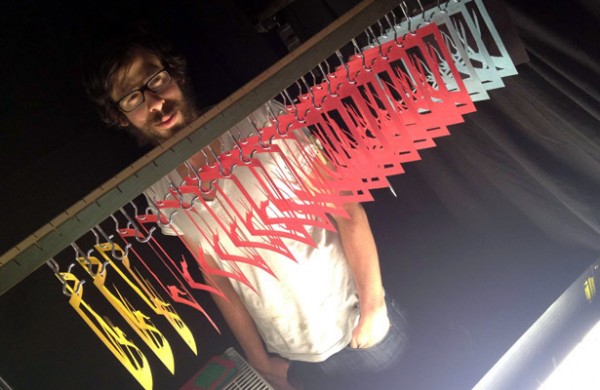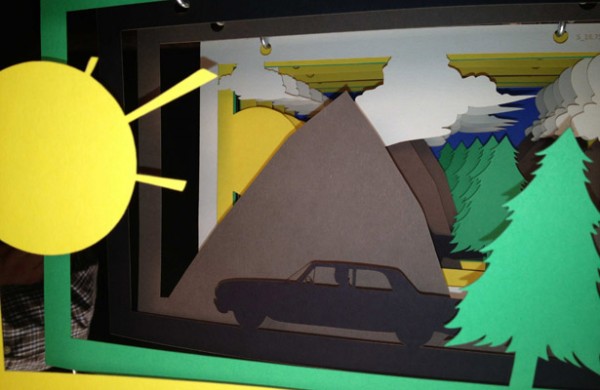The making of “Love Is Making It’s Way Back Home”

The animated video Love Is Making It’s Way Back Home by Josh Ritter was a collaboration with animator Sam Cohen, and director Erez Horovitz. Over 12,000 pieces of construction paper, precisely cut for each frame, was used in the making of this video with no special effects add. To make it possible, Erez Horovitz produced a team of artists and editors creating the amazing animation of Love Is Making It’s Way Back Home.

Sam Cohen gives his description of making this video:
The video for Love is Making It’s Way Back Home was definitely the most labor intensive video we’ve been a part of – and with my background in stop-motion collage animation, and Erez (Horovitz) having worked on videos for OKGO, that’s kind of saying a lot. This is the first video to be officially released as a Prominent Figures production, which is the team Erez and I (Sam Cohen) formed after collaborating on a video for my own band, Yellowbirds. To tackle the technical demands of this process, we augmented the team with our resident graphics wiz, Sarah Graves (also my wife!), graphic designer Savannah Wolf, and the team at Boston’s Danger Awesome in Cambridge, MA, which included Marlie Pesek, Eric Giordano, Felipe Sanchez, and Ali Mohammed.

The video was made in several stages: storyboarding, computer animation, converting the computer graphics frame by frame to paper cutouts, and photographing those roughly 12,000 cutouts into about four minutes of paper animation.

Josh Ritter had come to us with a loose narrative about driving through the night, and he wanted it to tie into the cover artwork which is a two-tone illustration. We started planning things out, keeping in mind that everything would be conveyed more-or-less as silhouettes. I wanted it to have the organic quality of those old Lotte Reiniger animations, but Erez saw the potential for it to start with that quality but evolve beyond that medium, so, once we had the story laid out, Erez spent over six weeks animating the entire video in After Effects, which gave him more control of perspective and perceived camera motion. We scoured books, magazines and the internet for the right images from which to create illustrations to use in the digital animation process, and during that time discovered the strata-cut technique which we used for the video’s ending. We were very inspired by Jen Stark and Ghost Robot’s strata-cut animations.

The video you see in the end is purely physical frame by frame animation. Everything you see is photographs of paper with no effects whatsoever. One of the most challenging parts of making the video was looking at the computer screen during the pre-animation phase in rigid black and white with no shadow or depth, and trying to visualize how it would later look and work as paper in 3D space. We had to determine ahead of time which images to cut as positives or negatives, how to anchor the cutouts to the paper frame that surrounds it so the pieces wouldn’t fall out, and a host of other problems.

When the animation was finished, the team at Danger Awesome began the process of making the paper cutouts used in the final video, manning 2 laser cutters receiving images directly from the digital animation to create the 12,000 cutouts involved.

The final stage was photographing – good old stop-motion animation done at 15 frames per second. The frames were hung vertically from hooks in 23 rows, row 1 being closest to the camera, row 23 farthest away. The rig was setup in our makeshift cave of thick black blankets hung from the ceiling to keep out all light. The paper scenes were then lit from the front and below, and photographed with a digital still camera on a tripod. Each photo is viewed for 1/15th of a second and each cutout represents one layer within a frame. A single frame could have anywhere from 2-100 layers, with a setup time of 20 seconds to 5 minutes.





Leave a Reply